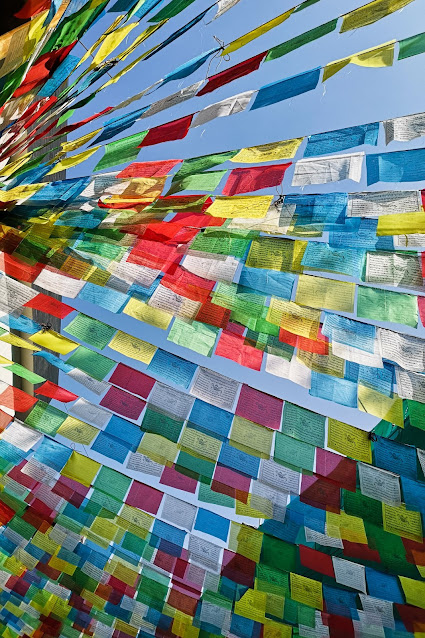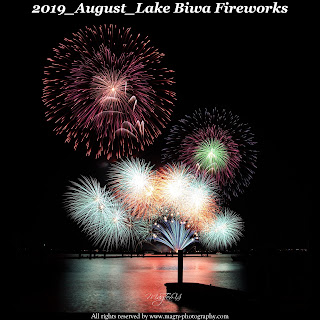Out of Norm Travels - Temples in Northern Provinces of Thailand: Wat Phra That Doi Suthep, Wat Rong Khun, Wat Chamadevi and Wat Chaloem Phrakiat Phrachomklao Rachanuson
For those up for a trip up north of Thailand, the most famous, largest and connected of its cities will be Chiangmai or Chiang Mai or Chieng mai. It is also regarded as the unofficial capital of Northern Thailand, second in importance only to Bangkok.
Chiang Mai succeeded Chiang Rai as the capital of the Lanna kingdom. The city was surrounded by a moat and a defensive wall since nearby Burma was a constant threat, as were the armies of the Mongol Empire. With the decline of the Lanna Kingdom, the city lost importance and was occupied by the Burmese in 1556.
One other temple you should trot down when up in the North should be Wat Rong Khun (วัดร่องขุ่น, aka White Temple) in Chiang Rai. Info from http://www.thailandforchildren.com/ states that the White Temple was born from the devotion of National Artist Chalermchai Kositpipat. A deeply devout Buddhist famed primarily for his religious-themed paintings, Chalermchai began the White Temple in 1997. This temple however is not for the faint-hearted - you will see the Bridge of Cycle and Rebirth and Gate of Heaven.
Today, people readily head down here to enjoy the cooler and milder climate compared to Bangkok especially during the winter months.
At my recent trip there, I explored a temple outside Chiang Mai at Lamphun region (formerly Haripunchai) which is amongst the oldest cities in Thailand and predates Chiang Mai by several centuries.
A mere 30 - 60 mins drive out of Chiang Mai, it is certainly worth a visit if you are familiar with the usual sights of Chiang Mai. Northern Thai chronicles suggest the city of Haripunchai was founded by some Buddhist monks in 661 AD, but the actual date may have been as late as the mid-ninth century.
The chronicles tell how some Buddhist monks wished to establish a city and invited Queen Chamadevi from Lopburi to be the first ruler (a statue of the queen stands in a small park near the south-west corner of the old city moats). The city survived Lawa attacks and eventually assimilated the Lawa and other ethnic groups.
Lamphun was part of the Mon Dvaravati civilization which developed along trade routes from the Gulf of Martaban to the Chao Phraya River basin and beyond to the north and east.
One of the most important temples is Wat Chamadevi or Wat Chamthewi better known locally as Wat Ku Kut. On the tourist notice board, it indicates that this temple dates back 749 A.D. Wat Chamadevi is considered one of the oldest temple in the Northern provinces of Thailand. On the grounds of the temple lies a beautiful Chedi known as "Suwan Chedi Jungkote". Its architectural style is that of the Hariphunchai period with a square structure that resembles a pyramid. Each tier of the Chedi is decorated with ancient Buddha images and enshrined inside it are the ashes of Phra Nang Cham Thewi." This is known to be one of the rarest examples of Mon architecture still surviving in the whole of Thailand.
Similar info from http://www.thailandsworld.com/index.cfm?p=292 states that this is the "site of the two oldest surviving monuments in Lamphun, both brick chedis decorated with stucco figures of the Buddha, dating from 1218, and considered to be the finest surviving examples of Haripunchai, Mon architecture in Thailand. The larger of the two, Chedi Suwan Chang Kot, is a stepped pyramid 21 metres high, thought to have been modelled on a similar dagoba in Polonnaruwa, Sri Lanka. Nearby there is another chedi of smaller proportions but equal style. This structure, the Ratana Chedi, is said to contain the ashes of the great queen herself."
If you still have the stamina, you can head down to another temple called Wat Chaloem Phrakiat Phrachomklao Rachanuson (aka Temple at the top of the hill) located at Jae Hom district Lampang province. Near to that area, we parked the car in a lower car park and pay 100Baht per adult for the return journey up to the top car park via 4 wheel drive. It takes a certain amount of skill to make that drive which is peppered with twists and turns. As for the climb, I took around 20-30 mins mainly due to the thin air. Once I reached the temple at the top, I was treated to a spectacular view of the surrounding landscape.
I was lucky to witness a group of novice monks undertaking this same journey and came back with lovely memories of this beautiful location. Here's a video of the climb of some 27 mins compressed into 30 seconds (sorry for the jumpiness).
Till the next time, onto the world and beyond!
One other temple you should trot down when up in the North should be Wat Rong Khun (วัดร่องขุ่น, aka White Temple) in Chiang Rai. Info from http://www.thailandforchildren.com/ states that the White Temple was born from the devotion of National Artist Chalermchai Kositpipat. A deeply devout Buddhist famed primarily for his religious-themed paintings, Chalermchai began the White Temple in 1997. This temple however is not for the faint-hearted - you will see the Bridge of Cycle and Rebirth and Gate of Heaven.
Today, people readily head down here to enjoy the cooler and milder climate compared to Bangkok especially during the winter months.
At my recent trip there, I explored a temple outside Chiang Mai at Lamphun region (formerly Haripunchai) which is amongst the oldest cities in Thailand and predates Chiang Mai by several centuries.
A mere 30 - 60 mins drive out of Chiang Mai, it is certainly worth a visit if you are familiar with the usual sights of Chiang Mai. Northern Thai chronicles suggest the city of Haripunchai was founded by some Buddhist monks in 661 AD, but the actual date may have been as late as the mid-ninth century.
The chronicles tell how some Buddhist monks wished to establish a city and invited Queen Chamadevi from Lopburi to be the first ruler (a statue of the queen stands in a small park near the south-west corner of the old city moats). The city survived Lawa attacks and eventually assimilated the Lawa and other ethnic groups.
Lamphun was part of the Mon Dvaravati civilization which developed along trade routes from the Gulf of Martaban to the Chao Phraya River basin and beyond to the north and east.
One of the most important temples is Wat Chamadevi or Wat Chamthewi better known locally as Wat Ku Kut. On the tourist notice board, it indicates that this temple dates back 749 A.D. Wat Chamadevi is considered one of the oldest temple in the Northern provinces of Thailand. On the grounds of the temple lies a beautiful Chedi known as "Suwan Chedi Jungkote". Its architectural style is that of the Hariphunchai period with a square structure that resembles a pyramid. Each tier of the Chedi is decorated with ancient Buddha images and enshrined inside it are the ashes of Phra Nang Cham Thewi." This is known to be one of the rarest examples of Mon architecture still surviving in the whole of Thailand.
Similar info from http://www.thailandsworld.com/index.cfm?p=292 states that this is the "site of the two oldest surviving monuments in Lamphun, both brick chedis decorated with stucco figures of the Buddha, dating from 1218, and considered to be the finest surviving examples of Haripunchai, Mon architecture in Thailand. The larger of the two, Chedi Suwan Chang Kot, is a stepped pyramid 21 metres high, thought to have been modelled on a similar dagoba in Polonnaruwa, Sri Lanka. Nearby there is another chedi of smaller proportions but equal style. This structure, the Ratana Chedi, is said to contain the ashes of the great queen herself."
If you still have the stamina, you can head down to another temple called Wat Chaloem Phrakiat Phrachomklao Rachanuson (aka Temple at the top of the hill) located at Jae Hom district Lampang province. Near to that area, we parked the car in a lower car park and pay 100Baht per adult for the return journey up to the top car park via 4 wheel drive. It takes a certain amount of skill to make that drive which is peppered with twists and turns. As for the climb, I took around 20-30 mins mainly due to the thin air. Once I reached the temple at the top, I was treated to a spectacular view of the surrounding landscape.
I was lucky to witness a group of novice monks undertaking this same journey and came back with lovely memories of this beautiful location. Here's a video of the climb of some 27 mins compressed into 30 seconds (sorry for the jumpiness).







Comments
Post a Comment